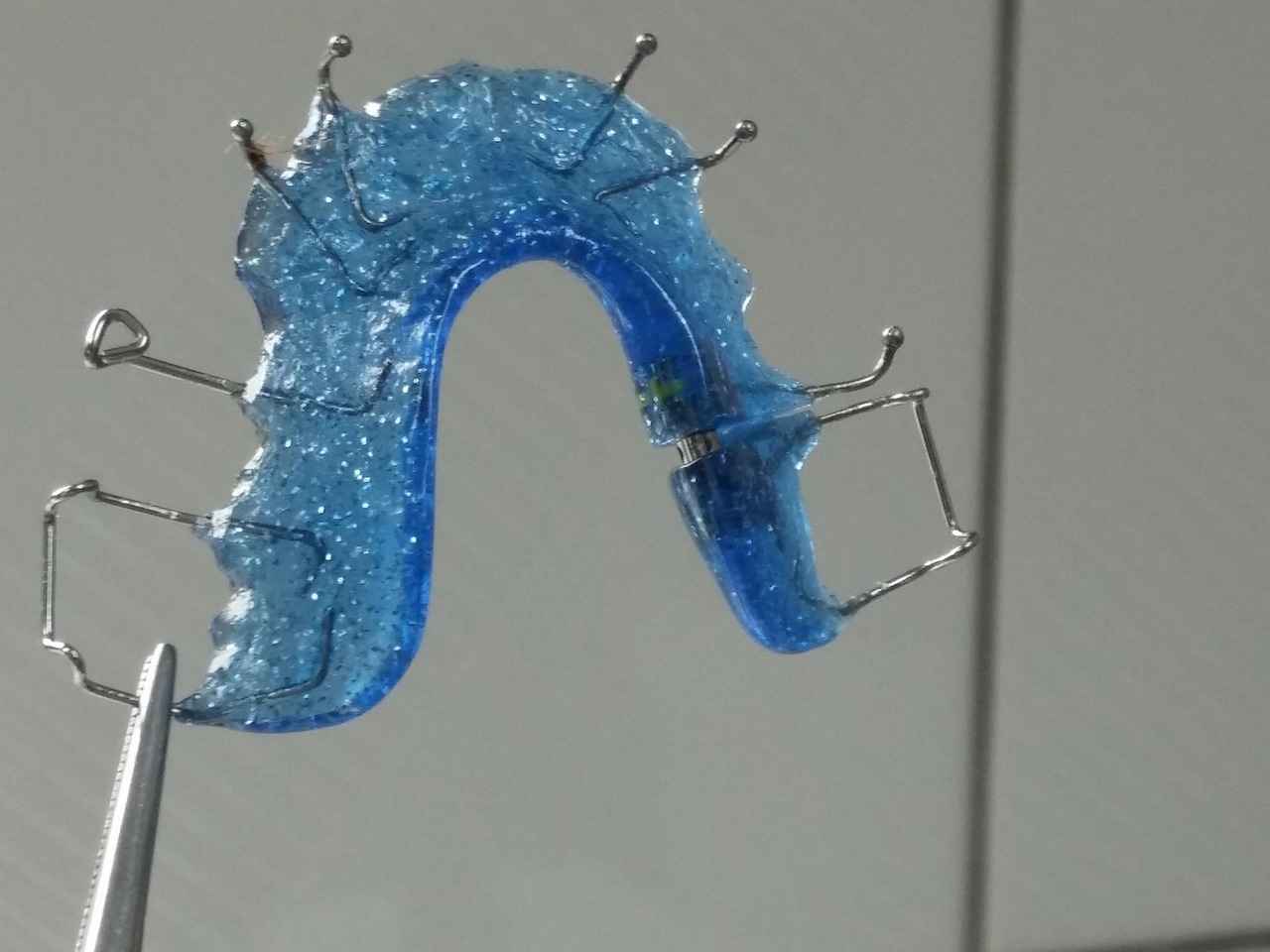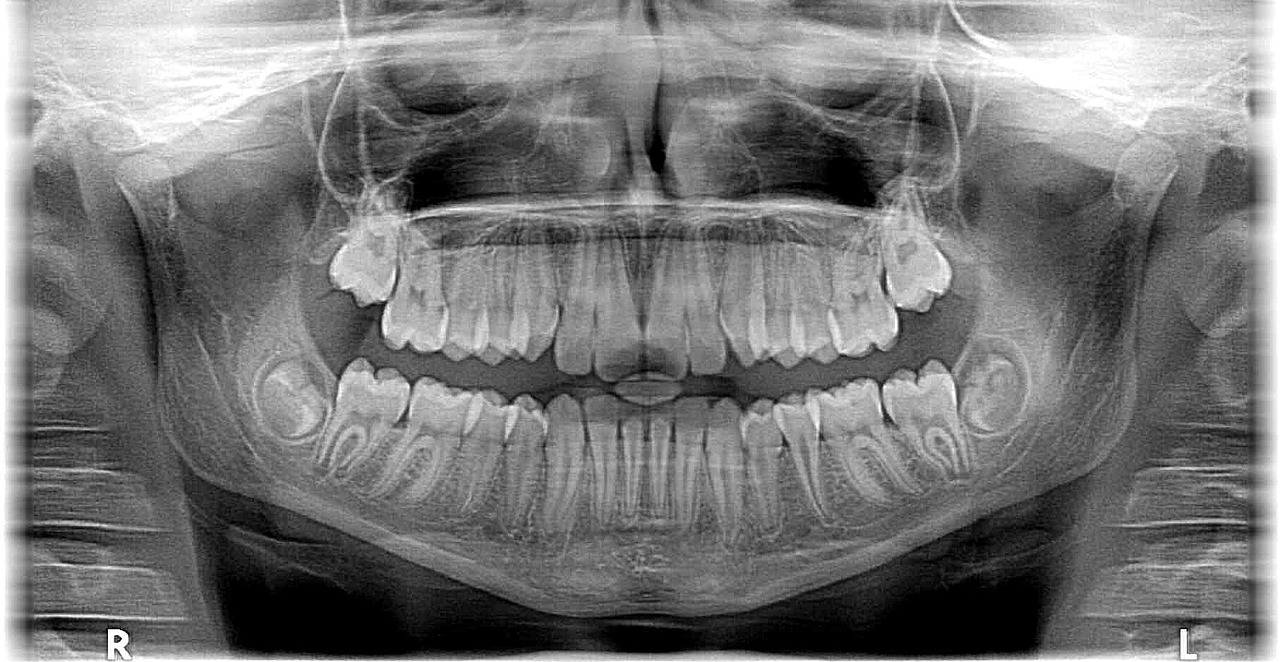This article delves into the appropriate age for getting braces, outlining essential guidelines, requirements, and various factors that influence orthodontic treatment for children and teenagers.
What is the Ideal Age for Braces?
Determining the right age for braces is vital for successful orthodontic treatment. Most orthodontists suggest that children should have their first evaluation around age 7, when permanent teeth start to emerge. At this age, the orthodontist can identify any potential issues, such as crowding or bite discrepancies, that may require intervention.
Why is Age Important in Orthodontics?
Understanding the importance of age in orthodontics can empower parents to make informed decisions. Early intervention can prevent more severe dental problems in the future, promoting better oral health. For instance, addressing alignment issues early can lead to less extensive treatments later on.
What Happens During the First Orthodontic Visit?
The initial orthodontic consultation is comprehensive and includes:
- Detailed examination of the teeth and jaws
- X-rays to assess dental alignment
- Dental impressions for creating a personalized treatment plan
This thorough assessment allows the orthodontist to evaluate the child’s dental alignment and growth patterns effectively.
What Are the Common Signs That Braces Are Needed?
Several indicators suggest that a child may require braces, including:
- Overcrowded teeth
- Significant gaps between teeth
- Difficulty chewing or biting
Recognizing these signs can facilitate timely treatment and improve dental health.
How Does Dental Development Affect Treatment Timing?
Each child’s dental development is unique. Orthodontists take into account factors such as the eruption of adult teeth and jaw growth when determining the optimal time to begin treatment. Monitoring these developments helps ensure that braces will be effective.
How Do Different Age Groups Experience Braces?
Children, teens, and adults may have varying experiences with braces. Children often adapt more quickly, while older teens and adults might have different aesthetic concerns. Understanding these variations helps set realistic expectations for treatment duration and comfort.
What Are the Different Types of Braces Available?
There are several types of braces available, each suited to different age groups and dental needs:
- Traditional Metal Braces: The most common type, effective for a wide range of dental issues.
- Clear Aligners: Such as Invisalign, offer a discreet alternative, appealing to older teens and adults.
- Ceramic Braces: These blend with the teeth for a less noticeable option.
Understanding these options can help patients choose the best treatment for their needs.
What Factors Influence the Timing of Braces?
Several factors can affect when a child should get braces, including:
- Dental Health: A child’s overall dental health plays a significant role. Issues like cavities or gum disease must be resolved before starting treatment.
- Growth Patterns: Monitoring jaw growth and the eruption of teeth can guide the timing of braces.
- Personal Readiness: A child’s maturity and responsibility for oral hygiene are crucial for successful treatment.
Being aware of these influences can assist parents in making the best decisions regarding their child’s orthodontic care.

What is the Ideal Age for Braces?
Determining the ideal age for braces is a critical step in ensuring effective orthodontic treatment. Most orthodontists suggest that evaluations begin around age 7, coinciding with the emergence of permanent teeth. This early assessment allows orthodontists to identify any potential issues before they develop into more serious problems, making proactive treatment possible.
At this age, children’s mouths are still growing, and their teeth are transitioning from primary to permanent. This stage provides an opportunity for orthodontists to monitor the alignment of teeth and the growth of the jaw. It is during this time that various dental issues, such as overcrowding, gaps, or misalignment, can be detected.
Early evaluations can lead to preventive measures that may save time and money in the long run. For instance, if an orthodontist identifies that a child is likely to need braces, they can create a treatment plan that may involve expansion appliances or other methods to guide the growth of the jaw and teeth. This approach can reduce the severity of future orthodontic issues.
During the initial consultation, the orthodontist will conduct a thorough examination, which typically includes:
- X-rays to assess the position of the teeth and roots
- Dental impressions to create a model of the teeth
- A detailed discussion about the child’s dental history and any concerns
This comprehensive evaluation helps the orthodontist to develop a tailored treatment plan that addresses the specific needs of the child.
Parents should be aware of several signs that may indicate a child needs braces, including:
- Overcrowded teeth that are pushing against each other
- Gaps between teeth that may affect bite
- Difficulty chewing or biting down
- Speech issues related to dental alignment
Recognizing these signs early can help facilitate timely treatment, ensuring that the child has the best chance for a healthy smile.
Every child’s dental development is unique. Factors such as the timing of adult teeth eruption and jaw growth play significant roles in determining the best time to start treatment. An orthodontist will evaluate these factors to recommend the most appropriate timing for braces.
Children, teens, and adults each have different experiences with braces. For children, the process can be less intimidating, especially if they see it as a rite of passage. Teens may have concerns about aesthetics and often prefer options like clear aligners. Adults, on the other hand, may prioritize comfort and discretion, leading them to explore various types of braces.
Understanding the different types of braces can help patients make informed decisions. The most common options include:
- Traditional metal braces – Effective for various dental issues
- Ceramic braces – Less noticeable, suitable for teens and adults
- Lingual braces – Placed behind the teeth for a hidden appearance
- Clear aligners – Removable and comfortable, ideal for older patients
Each type of brace has its own advantages and can be chosen based on the patient’s specific needs and lifestyle.
Several factors can influence when a child should get braces, including:
- Overall dental health – Issues like cavities must be addressed first
- Growth patterns – Monitoring the child’s growth can help in timing
- Personal readiness – A child’s maturity and responsibility for oral hygiene are crucial
By considering these factors, parents can work closely with orthodontists to determine the best timing for braces.

Why is Age Important in Orthodontics?
Understanding the significance of age in orthodontics is crucial for parents aiming to make informed decisions regarding their children’s dental health. The timing of orthodontic treatment can significantly influence the overall effectiveness and outcome of the procedure. Early intervention can not only address current dental issues but also prevent more severe problems from developing in the future.
Most orthodontists recommend that children have their first evaluation by age 7. At this age, the first permanent molars typically emerge, providing a clear view of how the child’s teeth are aligning. This early assessment allows orthodontists to identify potential issues—such as overcrowding, misalignment, or bite problems—that may require intervention.
One of the primary reasons age is important in orthodontics is the developmental stage of a child’s jaw and teeth. During childhood, the jaw is still growing, which provides a unique opportunity for orthodontists to guide the growth of the jaw and teeth into their correct positions. If treatment is initiated at the right time, it can lead to less invasive procedures and a shorter duration of wearing braces.
- Early intervention: Addressing dental issues before they become severe can save time and money in the long run.
- Better alignment: Correcting dental issues early can lead to better alignment of teeth and jaw.
- Improved self-esteem: Children who receive orthodontic treatment at an appropriate age often experience a boost in self-confidence as their smiles improve.
Moreover, understanding the age factor also helps in recognizing the signs that braces may be needed. Common indicators include overcrowded teeth, noticeable gaps, or difficulties with chewing. Parents who are aware of these signs can seek timely evaluations, ensuring that their children receive the necessary care.
Another critical aspect is the timing of dental development. Each child is unique, and their dental development varies significantly. Factors such as the eruption of adult teeth and the growth patterns of the jaw play a crucial role in determining when to start orthodontic treatment. An orthodontist will assess these factors during the initial consultation to recommend the best course of action.
In some cases, orthodontists may suggest a two-phase treatment plan for children who require more extensive corrections. The first phase may occur while the child still has a mix of baby and permanent teeth, allowing for early adjustments. The second phase typically takes place once all permanent teeth have erupted. This approach can lead to more effective results and a more comfortable experience for the patient.
In summary, understanding the significance of age in orthodontics empowers parents to make informed decisions regarding their children’s dental health. Early intervention can pave the way for better oral health, improved self-esteem, and a lifetime of smiles. By recognizing the importance of dental evaluations and being aware of the signs that indicate the need for braces, parents can help ensure their children receive the best possible care.
What Happens During the First Orthodontic Visit?
The first orthodontic visit is a crucial step in determining the appropriate course of treatment for your child. This initial consultation is designed to provide a comprehensive overview of your child’s dental health and alignment. Understanding what happens during this visit can help parents prepare and set expectations.
During the initial consultation, the orthodontist will conduct a thorough examination of your child’s teeth and jaws. This examination often includes:
- X-rays: These images allow the orthodontist to view the position of teeth and roots, as well as the jaw structure, providing valuable information for treatment planning.
- Dental Impressions: Taking impressions of your child’s teeth helps create a precise model, which can be used to analyze bite and alignment issues.
- Visual Examination: The orthodontist will visually assess the alignment of teeth and any potential crowding or spacing issues.
X-rays and impressions serve as essential tools in orthodontics. They help the orthodontist:
- Assess Growth Patterns: Understanding how your child’s teeth and jaw are developing can inform when to start treatment.
- Identify Potential Issues: Early detection of problems like overcrowding or misalignment allows for timely intervention.
- Plan Treatment: Accurate models and images enable the orthodontist to devise a personalized treatment plan tailored to your child’s specific needs.
As a parent, it’s important to engage with the orthodontist during this visit. Here are some questions you might consider asking:
- What is the recommended treatment plan?
- How long will treatment take?
- What are the costs involved, and are there financing options?
- What can we expect in terms of discomfort or adjustments?
Preparation can make the first orthodontic visit smoother. Here are some tips:
- Gather Dental Records: Bring any previous dental records or X-rays that may be relevant.
- Discuss Concerns: Talk with your child about any specific concerns or questions they may have.
- Encourage Open Communication: Remind your child that the orthodontist is there to help and answer any questions they might have.
After the initial visit, the orthodontist will review all the collected information and may schedule follow-up appointments to discuss the treatment plan in detail. This plan may include options like traditional braces, clear aligners, or other orthodontic appliances.
Ultimately, the first orthodontic visit is an informative and essential step in ensuring your child’s dental health and alignment. By understanding what to expect, parents can feel more confident and prepared for their child’s orthodontic journey.
What Are the Common Signs That Braces Are Needed?
When it comes to maintaining a child’s oral health, recognizing the signs that they may need braces is crucial. Early detection and intervention can lead to more effective orthodontic treatment and prevent more serious dental issues down the line. Below are some common indicators that suggest a child may require braces.
One of the most frequent signs that braces may be necessary is overcrowded teeth. This occurs when there is not enough space in the mouth for the teeth to align properly. Overcrowding can lead to tooth misalignment, which may cause issues with oral hygiene, as it becomes difficult to clean overlapping teeth effectively. Parents should look for signs of teeth that appear crooked or overlap significantly.
Another indicator is the presence of gaps between teeth. While some gaps can be normal, excessive spacing may suggest that the teeth are not growing in properly. This can be indicative of underlying issues with jaw development or tooth size, necessitating orthodontic evaluation. Gaps can affect a child’s confidence and willingness to smile, making it important to address them early.
If a child experiences difficulty chewing or biting, it may be a sign that their teeth are misaligned. This can lead to discomfort during meals and may affect their nutritional intake. Parents should monitor their child’s eating habits and be alert for any signs of discomfort or avoidance of certain foods, as these could indicate the need for braces.
Mouth breathing can also be a sign that orthodontic intervention may be necessary. Children who breathe through their mouths may have dental or jaw alignment issues that could be corrected with braces. This habit can lead to further complications, such as dry mouth and increased risk of dental decay, making it essential to consult an orthodontist.
Some children may experience speech difficulties due to misaligned teeth or jaw issues. If a child has trouble pronouncing certain sounds or words, it might be beneficial to have their dental alignment evaluated. Proper alignment can significantly improve speech clarity and confidence.
Jaw pain or clicking sounds when opening or closing the mouth can indicate that the jaw is not properly aligned. This discomfort can be exacerbated by teeth misalignment, and early evaluation can help address these problems before they worsen.
Lastly, habits such as thumb sucking or prolonged use of pacifiers can lead to misalignment of teeth and jaw issues. If these habits persist beyond the age of 4 or 5, it may be time to consult an orthodontist to discuss potential treatment options.
In conclusion, recognizing these signs can facilitate timely treatment and ensure that a child achieves optimal oral health. If any of these indicators are observed, it is advisable to schedule a consultation with an orthodontist. Early intervention can lead to successful outcomes and a healthier smile.
How Does Dental Development Affect Treatment Timing?
Understanding the timing of orthodontic treatment is crucial for ensuring optimal dental health and alignment. Each child’s dental development varies, making it essential for parents to recognize the factors that influence when braces should be applied. Orthodontists consider several aspects, such as the eruption of adult teeth and jaw growth, to determine the best time to begin treatment.
The timing of orthodontic treatment plays a vital role in achieving the best results. Early intervention can prevent more severe dental issues from developing later on. When permanent teeth begin to emerge, typically around age 6 or 7, orthodontists can identify potential problems that may require braces. By addressing these issues early, children can avoid more extensive treatments in the future.
- Eruption of Adult Teeth: The timing of when adult teeth come in is different for every child. Some may lose their baby teeth early, while others may take longer. Orthodontists monitor this process closely to decide when to initiate treatment.
- Jaw Growth: Jaw development is another critical factor. A child’s jaw must be sufficiently developed to accommodate adult teeth. If treatment begins too early, there may be a risk of needing adjustments later.
- Dental Health: A child’s overall dental health is crucial. Issues such as cavities or gum disease must be resolved before starting orthodontic treatment to ensure a healthy foundation for braces.
Parents should be aware of several indicators that suggest a child may need braces:
- Overcrowded or crooked teeth
- Gaps between teeth
- Difficulty chewing or biting
- Jaw misalignment or discomfort
Recognizing these signs early can facilitate timely treatment and help avoid complications down the line.
During the initial consultation, the orthodontist will perform a comprehensive examination. This includes taking X-rays and dental impressions to assess the child’s dental alignment and growth patterns. Based on this evaluation, the orthodontist will discuss the most appropriate timing for braces, considering the child’s specific developmental stage.
Preparation for orthodontic treatment involves more than just scheduling an appointment. Parents should:
- Ensure their child maintains good oral hygiene
- Discuss any concerns or questions with the orthodontist
- Encourage their child to be mentally prepared for the changes that braces will bring
By actively participating in the process, parents can help their children adjust to the idea of wearing braces and understand the importance of following the orthodontist’s instructions.
In summary, understanding how dental development affects treatment timing is essential for effective orthodontic care. By monitoring the eruption of adult teeth and considering jaw growth, orthodontists can determine the optimal time to begin treatment. Early intervention can lead to better outcomes, making it crucial for parents to stay informed and proactive in their child’s dental health journey.
How Do Different Age Groups Experience Braces?
Braces are a common orthodontic treatment that can significantly improve dental alignment and overall oral health. However, the experience of wearing braces can vary widely depending on the age of the patient. Understanding these differences is essential for setting realistic expectations regarding treatment duration and comfort.
For children, the journey with braces often begins around the age of 7. At this age, many children have a mix of baby and permanent teeth, making it an ideal time for an orthodontic evaluation. The experience can be exciting for children, as they often look forward to the transformation of their smiles. However, they may also feel some anxiety regarding the discomfort associated with braces.
- Comfort Level: Children may need time to adjust to the feeling of braces, which can cause soreness in the initial days after installation or adjustment.
- Compliance: Children may require more supervision to ensure they follow care instructions, such as avoiding certain foods and maintaining oral hygiene.
Teenagers often have a more complex relationship with braces. Many are self-conscious about their appearance, making the choice to get braces a significant decision. They may prefer clear aligners or less visible options due to aesthetic concerns.
- Social Impact: Teens may feel pressure regarding their looks, which can influence their experience with braces.
- Responsibility: Older teens typically have greater responsibility for their oral care, which can lead to better outcomes if they adhere to orthodontic recommendations.
Adults seeking orthodontic treatment often have different motivations and experiences with braces. Many adults prioritize aesthetics and may opt for clear aligners or ceramic braces to minimize visibility.
- Comfort and Sensitivity: Adults may experience discomfort differently than children or teens, often reporting that they are more sensitive to the pressure of braces.
- Time Commitment: Adults may have busy schedules, making the time commitment for orthodontic appointments and adjustments a significant factor in their treatment planning.
The emotional journey of wearing braces can also differ by age group. Children may feel excitement and curiosity, while teens might experience self-consciousness and peer pressure. Adults, on the other hand, might feel a mix of determination and frustration due to the time and effort required for treatment.
- Support Systems: Children often rely on their parents for emotional support, while teens may seek validation from friends. Adults might find support through online communities or orthodontic support groups.
- Long-Term Benefits: Regardless of age, understanding that braces are a temporary phase can help all age groups focus on the long-term benefits of improved oral health and aesthetics.
In conclusion, the experience of wearing braces varies significantly between children, teens, and adults. By understanding these differences, patients and their families can better prepare for the journey ahead, ensuring that they have realistic expectations regarding treatment duration and comfort. Whether for cosmetic reasons or necessary dental correction, the goal remains the same: to achieve a healthy, beautiful smile.

What Are the Different Types of Braces Available?
When it comes to orthodontic treatments, understanding the various types of braces available is essential for making informed decisions. Each type of brace caters to different age groups and specific dental needs, ensuring that patients receive the best possible care for their unique situations. Below, we explore the most common types of braces, highlighting their features, benefits, and suitability.
- Traditional Metal Braces: These are the most widely used braces, consisting of metal brackets and wires. They are highly effective in treating a range of dental issues, such as overcrowding and misalignment. Traditional braces are suitable for both children and adults, providing a reliable solution for various orthodontic challenges.
- Ceramic Braces: Similar to metal braces, ceramic braces use brackets made of clear or tooth-colored materials, making them less noticeable. This option is particularly appealing to teens and adults who prefer a more discreet treatment. However, they require careful maintenance, as they can stain if not properly cared for.
- Lingual Braces: Lingual braces are placed on the back of the teeth, making them virtually invisible from the front. This option is ideal for individuals who want an effective treatment without the aesthetic concerns associated with traditional braces. However, they may require a longer adjustment period and can be more challenging to clean.
- Clear Aligners: Clear aligners, such as Invisalign, are a popular choice for those seeking a more aesthetic approach to orthodontics. These removable trays gradually shift teeth into place without the use of brackets or wires. They are particularly favored by older teens and adults due to their convenience and comfort.
Choosing the right type of braces involves considering several factors:
- Age: Different types of braces may be more suitable for specific age groups. For instance, younger children may benefit from traditional metal braces, while teens might prefer ceramic or clear aligners.
- Dental Needs: The complexity of the dental issue at hand will influence the choice of braces. More severe alignment problems may require traditional metal braces for effective treatment.
- Aesthetic Preferences: Many patients, especially adults, prioritize aesthetics. Options like ceramic braces or clear aligners cater to those looking for a less visible treatment.
- Comfort and Maintenance: Each type of brace has different comfort levels and maintenance requirements. Clear aligners, for example, can be removed for eating and cleaning, which may appeal to busy individuals.
Each type of braces comes with its own set of advantages:
- Traditional Metal Braces: Highly effective for complex dental issues and often more affordable than other options.
- Ceramic Braces: Offer a more aesthetic option while maintaining effectiveness, suitable for teens and adults.
- Lingual Braces: Provide a discreet solution for those who desire invisibility in their orthodontic treatment.
- Clear Aligners: Allow for flexibility and comfort, with the added benefit of being removable for easy cleaning and maintenance.
In summary, understanding the different types of braces available is crucial for patients considering orthodontic treatment. By evaluating personal needs, preferences, and dental conditions, individuals can make informed choices that lead to successful orthodontic outcomes.
What Are Traditional Metal Braces?
When it comes to orthodontic treatment, traditional metal braces are often the first option that comes to mind. These braces are widely recognized and have been used for decades to correct a variety of dental issues. They consist of metal brackets that are attached to the teeth and connected by a series of wires. This combination works to gradually shift the teeth into their proper positions over time.
The mechanics of traditional metal braces are quite fascinating. The orthodontist places metal brackets on each tooth and threads a wire through them. This wire is then secured with small elastic bands, which apply gentle pressure to the teeth. Over time, this pressure causes the teeth to move into alignment. Regular adjustments are necessary, typically every 4 to 6 weeks, to ensure the treatment is progressing as planned.
- Effectiveness: Traditional metal braces are highly effective for treating a wide range of dental issues, including overcrowding, gaps, and bite problems.
- Durability: Made from high-quality stainless steel, these braces are designed to withstand the wear and tear of daily life.
- Affordability: Compared to other orthodontic options, metal braces tend to be more budget-friendly, making them accessible to a wider audience.
- Predictable Results: With decades of research and development, orthodontists have a clear understanding of how metal braces work, leading to reliable outcomes.
While traditional metal braces offer many benefits, they also come with some drawbacks:
- Aesthetic Concerns: Many individuals, especially teens, may feel self-conscious about the appearance of metal braces.
- Discomfort: Patients may experience discomfort and soreness after adjustments, although this is typically temporary.
- Dietary Restrictions: Certain foods, such as hard candies and sticky snacks, must be avoided to prevent damage to the braces.
Traditional metal braces are suitable for a wide range of patients, from children to adults. They are particularly effective for individuals with complex dental issues that require significant adjustments. Orthodontists recommend starting evaluations around age 7, as this is when most children begin to develop their permanent teeth.
The duration of treatment with traditional metal braces varies depending on the complexity of the individual case. On average, patients may wear braces for 18 to 24 months, but some may require them for a shorter or longer period. Regular follow-up appointments are essential for monitoring progress and making necessary adjustments.
Proper care is crucial for achieving the best results with traditional metal braces. Patients should maintain excellent oral hygiene by brushing and flossing regularly. Additionally, using a soft-bristle toothbrush and avoiding certain foods can help prevent complications.
In conclusion, traditional metal braces remain a popular choice for orthodontic treatment due to their effectiveness and reliability. Understanding how they work, their advantages and disadvantages, and the necessary care can help patients make informed decisions about their dental health.
What Are Clear Aligners and Their Benefits?
Clear aligners have revolutionized orthodontic treatment by providing a discreet and effective alternative to traditional braces. They are particularly popular among older teens and adults who prioritize aesthetics while seeking to improve their dental alignment.
Clear aligners are custom-made, transparent trays designed to gradually shift teeth into the desired position. Unlike traditional braces, which use brackets and wires, aligners are made from a smooth, comfortable plastic material. This design not only enhances comfort but also allows for easy removal when eating or brushing teeth.
- Discreet Appearance: One of the most significant advantages of clear aligners is their invisibility. Many adults and teens prefer this option as it does not draw attention to their orthodontic treatment.
- Comfort: Clear aligners are generally more comfortable than metal braces. The absence of brackets and wires means fewer chances of irritation to the gums and cheeks.
- Removability: Aligners can be removed for eating, drinking, and oral hygiene, making it easier to maintain good dental health during treatment.
- Fewer Office Visits: Patients typically require fewer visits to the orthodontist for adjustments, as aligners are changed at home every one to two weeks.
The process begins with a consultation with an orthodontist, who will assess the patient’s dental needs and create a treatment plan. Using advanced 3D imaging technology, the orthodontist designs a series of aligners that will gradually move the teeth into their correct positions. Each set of aligners is worn for about two weeks before moving on to the next set in the series.
While clear aligners are suitable for many patients, they may not be the best option for everyone. Severe dental issues, such as significant misalignment or bite problems, may require traditional braces for effective correction. Additionally, the success of clear aligners heavily relies on the patient’s commitment to wearing them for the recommended 20 to 22 hours per day.
Clear aligners are ideal for older teens and adults who seek a more aesthetic approach to orthodontics. They are particularly beneficial for individuals with mild to moderate dental misalignments, including:
- Crowded teeth
- Gaps between teeth
- Minor bite issues
Before deciding on clear aligners, it is essential to consider factors such as:
- Cost: Clear aligners can be more expensive than traditional braces, so it’s important to discuss payment options with your orthodontist.
- Commitment: Patients must be disciplined about wearing their aligners as prescribed to achieve the desired results.
- Consultation: A thorough evaluation by an orthodontist is crucial to determine if clear aligners are a suitable treatment option for your specific dental needs.
In summary, clear aligners provide a modern, effective, and discreet solution for orthodontic treatment, catering to those who value both comfort and aesthetics. With proper guidance and commitment, clear aligners can lead to a beautiful, healthy smile.

What Factors Influence the Timing of Braces?
When considering orthodontic treatment for children, it is essential to understand the various factors that influence the timing of braces. The decision is not solely based on age; instead, it encompasses a range of elements that can significantly impact the effectiveness of treatment. This article will delve into these factors, providing parents with the necessary insights to make informed decisions regarding their child’s orthodontic care.
The overall health of a child’s teeth and gums plays a crucial role in determining the appropriate time to begin orthodontic treatment. Before braces can be applied, any existing dental issues, such as cavities or gum disease, must be addressed. Orthodontists often recommend achieving optimal dental health to ensure the success of braces and to minimize complications during treatment.
Children’s dental development varies significantly. An orthodontist will assess growth patterns in both the teeth and jaw to determine the best timing for braces. For instance, if a child is still losing baby teeth or if their jaw is still growing, it may be advisable to wait before starting treatment. Conversely, early intervention can sometimes prevent more severe issues later on, making it essential to monitor growth closely.
Another critical aspect to consider is the child’s personal readiness for braces. This includes their emotional maturity and ability to maintain proper oral hygiene throughout treatment. Children who understand the importance of following orthodontic instructions and managing their dental care are often better suited for braces. Parents should assess their child’s willingness to embrace the responsibility that comes with wearing braces.
Parental preferences can also influence the timing of braces. Factors such as school schedules, sports activities, and family commitments may affect when a child starts treatment. Some parents may prefer to wait until summer breaks or holidays to minimize disruptions in their child’s daily routine. Additionally, the availability of orthodontic appointments can play a role, making it essential for parents to plan ahead.
Orthodontists are valuable resources in determining the right time for braces. During the initial consultation, they will conduct a thorough examination, including X-rays and dental impressions, to assess the child’s unique situation. Based on their findings, orthodontists can provide tailored recommendations, considering all the factors mentioned above.
In summary, several factors influence when a child should get braces, including dental health, growth patterns, personal readiness, and parental preferences. By understanding these influences, parents can make informed decisions that align with their child’s needs. Consulting with a qualified orthodontist is crucial in this process, ensuring that the timing of braces is optimal for achieving the best possible outcomes in orthodontic treatment.
How Does Dental Health Impact Orthodontic Timing?
When considering orthodontic treatment, dental health is a crucial factor that can significantly influence the timing for getting braces. A child’s overall dental condition must be evaluated before any orthodontic intervention begins. This ensures that the treatment is not only effective but also safe for the child’s developing teeth and gums.
Before commencing orthodontic treatment, it is essential to address any existing dental issues. Cavities and gum disease can complicate the process of straightening teeth. If these conditions are present, they must be treated first to prevent further complications during the orthodontic process. For instance, untreated cavities can lead to infections, which may hinder the movement of teeth.
- Cavities: These are areas of decay that can weaken teeth and affect their position.
- Gum Disease: Inflammation or infection of the gums can lead to tooth loss if not treated.
- Missing Teeth: If a child has lost teeth prematurely, it may affect the alignment of the remaining teeth.
- Jaw Alignment: Issues with the jaw can impact how teeth fit together, necessitating early intervention.
Parents play a vital role in maintaining their child’s dental health. Regular dental check-ups are essential to identify and treat issues early. A pediatric dentist can provide guidance on:
1. Proper oral hygiene practices2. The importance of a balanced diet3. Regular fluoride treatments4. Use of dental sealants
Most orthodontists recommend that children have their first evaluation by age 7. At this age, it is possible to identify potential problems with tooth alignment and jaw growth. Early detection allows for timely intervention, which can prevent more severe issues later on.
If a child’s dental health is compromised, delaying orthodontic treatment can lead to more significant problems. For example, untreated cavities can result in pain or infection, which may require more invasive treatments. Additionally, poor gum health can lead to tooth mobility and ultimately affect the success of braces.
In summary, a child’s overall dental health is a critical factor in determining the right time for braces. Addressing issues such as cavities and gum disease before starting orthodontic treatment is essential for ensuring a successful outcome. By prioritizing dental health, parents can help their children achieve the best possible results from their orthodontic journey.
What Role Does Personal Readiness Play?
When considering orthodontic treatment for children, personal readiness is a critical factor that can significantly influence the success of braces. It is essential to evaluate a child’s maturity level, their sense of responsibility regarding oral hygiene, and their willingness to adhere to orthodontic instructions.
One of the primary aspects of personal readiness is a child’s maturity. Maturity affects how well a child can understand the importance of maintaining their braces and following the orthodontist’s guidelines. A more mature child is likely to comprehend the long-term benefits of wearing braces and will be more committed to the treatment process. This commitment can lead to better outcomes and a smoother experience overall.
Responsibility for oral hygiene is another crucial element. Braces require diligent care to prevent cavities and gum disease. Children must be able to brush and floss effectively around the brackets and wires. If a child is not yet capable of managing their oral hygiene independently, it may be advisable to wait until they are more prepared. Parents can help gauge their child’s readiness by observing their ability to maintain consistent hygiene practices.
Moreover, a child’s willingness to follow orthodontic instructions is vital. This includes adhering to dietary restrictions, wearing rubber bands if prescribed, and attending regular orthodontic appointments. If a child shows reluctance or defiance toward these requirements, it could prolong treatment time or even compromise the effectiveness of the braces. Encouraging children to express their feelings about braces can provide insight into their readiness and help parents make informed decisions.
In addition to maturity and responsibility, emotional readiness should also be considered. Some children may feel anxious or fearful about getting braces. Addressing these emotions through open communication can help ease their concerns. Parents can explain the process, share positive stories from peers, or even schedule a visit to the orthodontist for a friendly consultation to alleviate fears.
It is essential to recognize that each child is unique, and their readiness for braces can vary greatly. Consulting with an orthodontist can provide valuable insights into whether a child is ready for treatment. Orthodontists can assess not only the dental alignment but also the child’s emotional and psychological readiness, ensuring a comprehensive approach to treatment planning.
Ultimately, the decision to proceed with braces should be a collaborative effort between parents, children, and orthodontic professionals. By considering maturity, responsibility, willingness to follow instructions, and emotional readiness, families can make informed choices that lead to successful orthodontic outcomes. Taking the time to evaluate these factors can pave the way for a positive experience with braces, setting the foundation for a healthy and confident smile.
Frequently Asked Questions
- At what age should my child see an orthodontist?
Most orthodontists recommend that children have their first evaluation around age 7. This is when permanent teeth start to come in, making it easier to spot potential issues.
- What are the signs that indicate my child may need braces?
Look for signs like overcrowded teeth, gaps between teeth, or difficulty chewing. If you notice these issues, it might be time to consult an orthodontist.
- How long does orthodontic treatment typically last?
The duration varies depending on individual needs, but most treatments last between 18 months to 3 years. It’s like a journey to a perfect smile!
- Are there different types of braces available?
Absolutely! Options include traditional metal braces, ceramic braces, and clear aligners like Invisalign. Each type has its pros and cons, so choose one that fits your lifestyle!
- Can dental health affect when my child gets braces?
Yes, if your child has cavities or gum disease, those issues need to be resolved first. Think of it as preparing the foundation before building a house!
- How important is my child’s readiness for braces?
Very important! A child’s maturity and willingness to maintain good oral hygiene can significantly impact the success of their treatment.




